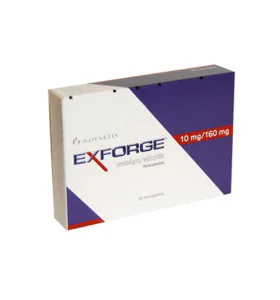


Two substances combined: Recognized for its broad cardiovascular benefits, amlodipine not only controls blood pressure but also mitigates risks of unstable angina and myocardial ischemia. It inhibits VSMC proliferation, a key factor in vascular remodeling, by targeting G1-phase cell cycle progression. Additionally, it influences microRNA pathways, such as miR-21, to maintain healthy vascular smooth muscle function, offering protection against vascular diseases. In vitro research highlights valsartan’s ability to reduce protein oxidation and glycation, effects comparable to established antioxidants like N-acetylcysteine and lipoic acid. It lowers markers such as protein carbonyls and advanced oxidation protein products (AOPP), while improving albumin antioxidant capacity. These findings suggest valsartan’s efficacy in combating redox imbalance and its potential to prevent vascular damage.
Fang, Q., Tian, M., Wang, F., Zhang, Z., Du, T., Wang, W., Yang, Y., Li, X., Chen, G., Xiao, L., Wei, H., Wang, Y., Chen, C. and Wang, D.W., 2019. Amlodipine induces vasodilation via Akt2/Sp1‐activated miR‐21 in smooth muscle cells. British Journal of Pharmacology
Mil, K.M., Gryciuk, M.E., Pawlukianiec, C., Żendzian-Piotrowska, M., Ładny, J.R., Zalewska, A., and Maciejczyk, M., 2021. Pleiotropic properties of valsartan: Do they result from the antiglycooxidant activity? Literature review and in vitro study. Oxidative Medicine and Cellular Longevity.
Disclaimer: Information provided it this page is for general information only and does not substitute for professional medical advice.
For detailed information about Exforge 165/170 by Novartis, consult with your doctor or healthcare professional.


Mil, K.M., Gryciuk, M.E., Pawlukianiec, C., Żendzian-Piotrowska, M., Ładny, J.R., Zalewska, A., and Maciejczyk, M., 2021. Pleiotropic properties of valsartan: Do they result from the antiglycooxidant activity? Literature review and in vitro study. Oxidative Medicine and Cellular Longevity.

Mil, K.M., Gryciuk, M.E., Pawlukianiec, C., Żendzian-Piotrowska, M., Ładny, J.R., Zalewska, A., and Maciejczyk, M., 2021. Pleiotropic properties of valsartan: Do they result from the antiglycooxidant activity? Literature review and in vitro study. Oxidative Medicine and Cellular Longevity.

Fang, Q., Tian, M., Wang, F., Zhang, Z., Du, T., Wang, W., Yang, Y., Li, X., Chen, G., Xiao, L., Wei, H., Wang, Y., Chen, C. and Wang, D.W., 2019. Amlodipine induces vasodilation via Akt2/Sp1‐activated miR‐21 in smooth muscle cells. British Journal of Pharmacology